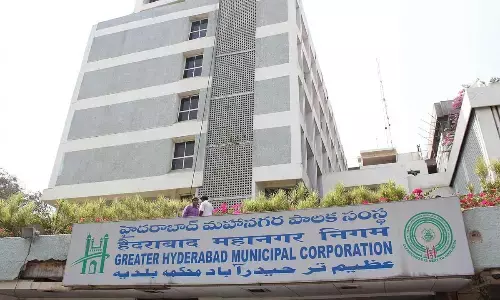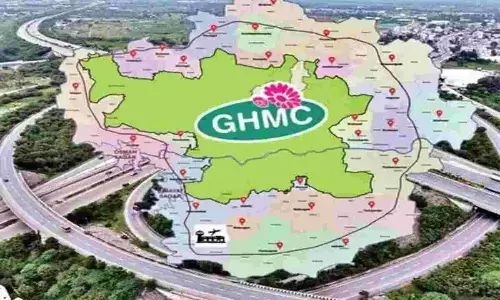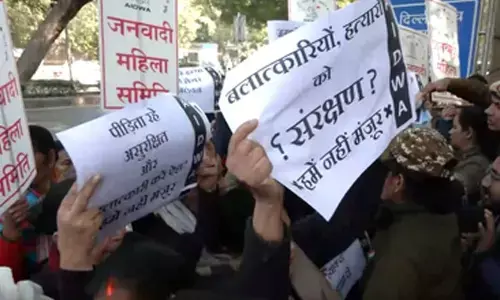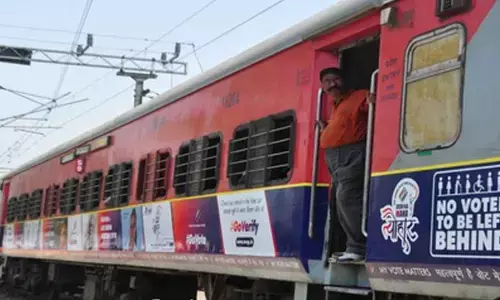Doing away with zonal system

The Telangana State government has decided to do away with the zonal system, calling it a legacy of the united Andhra Pradesh. Chief Minister K Chandrashekar Rao says the system has become redundant with the formation of new State of Telangana.
The Telangana State government has decided to do away with the zonal system, calling it a legacy of the united Andhra Pradesh. Chief Minister K Chandrashekar Rao says the system has become redundant with the formation of new State of Telangana.
The State government argues that the provisions have to be changed according to the contemporary needs. For instance, the Andhra Pradesh government has accorded local status to the children of those employees who have migrated to the residuary State after bifurcation.
The Telangana government intends to scrap the zonal system through a Presidential Order. After scrapping the zonal system, Telangana State shall have only two cadres, district and state cadres. However, the government assures that the rights of employees recruited under the zonal system like promotions and salary hikes would be protected.
The introduction of zonal system has its historical roots in the struggle of the people of Telangana seeking justice from the perceived loss of jobs due to the inequalities between the region and the rest of the then united Andhra Pradesh. This is precisely the reason why the State government postulates that the zonal system has no relevance in the post-bifurcation period.
There were apprehensions in the Telangana region over the possible loss of opportunities when the Hyderabad State was integrated with the Andhra State to form the first linguistic State of Andhra Pradesh in 1956.
Telangana was under the feudal dispensation and was relatively underdeveloped in education. This was the reason for such apprehensions. Migration from other regions of the undivided State increased as Hyderabad was the capital of the combined State. This led to increased fears over loss of jobs.
A firman issued by Nizam in 1919 stated that only mulkis were eligible for public appointments in Telangana. A mulki was one who was either born in the region or had been residing there continuously for 15 years and had given an affidavit stating no interest of returning to their native region.
As the fears of losing jobs increased in Telangana region, the demand for confining jobs in the region to only mulkis surfaced during the first phase of Telangana movement. A full bench of the Andhra Pradesh High Court held the mulki rules to be invalid after the formation of Andhra Pradesh. The issue went to the Supreme Court.
In 1972, the apex court declared them to be valid and in force. In fact, this ruling by the highest court of India led to the separate Andhra Movement in the early 1970s. Parliament through an act nullified the Supreme Court judgement. A six-point formula was introduced to guarantee adequate preference to local candidates in education and employment.
The Constitution (Thirty-Second Amendment) Act, 1973, was enacted to give effect to the six-point formula to address the concerns of local candidates over losing opportunities to non-locals. In undivided Andhra Pradesh, six zones were created through a Presidential Order in 1974 to give equitable job opportunities to Seemandhra and Telangana regions. After the formation of Telangana, the State got only two zones - Zone V and VI.
The zonal system in united Andhra Pradesh was intended at accelerated development of the backward areas of the State so as to secure the balanced development of the State as a whole and for providing equitable opportunities to different areas of the State in the matter of education, employment and career prospects in public services.
Even in united Andhra Pradesh, the zones were not based on the regions. The Telangana region also had two zones. The objective, therefore, was to ensure equitable opportunities for the people of different areas of State in the matter of admission to educational institutions and public employment.
Therefore, the zonal system has two dimensions. It has come in the wake of Telangana movement. At the same time, the objective is to ensure inter-regional equity. The KCR government feels that the zonal system is redundant as the Telangana issue is resolved with the formation of the new State. But, the critics of government decision lament that inter-regional inequalities continue to exist even in the new State of Telangana, thus justifying the continuation of zonal system.
The reorganisation of districts creates challenges for the zonal system. For instance, according to the draft notification for new districts, four mandals of Karimnagar district which are now in fifth zone are to be merged with the Siddipet district. Siddipet as part of the Medak district is now in sixth zone. Similarly, four mandals in Warangal district are to be included in Yadadri district. Thus, these mandals move from fifth zone to sixth zone.
The inter-change of mandals due to the reorganisation of districts will lead to overlapping of different zones. This creates several legal and administrative complications in terms of appointments, promotions etc. It may make the situation more complex than the reorganisation of the State itself.
The bifurcation of the State did not create such a situation as there was no overlapping of zones between Telangana and Seemandhra regions. The government perhaps is doing away with the zonal system to tide over this complex situation created by the reorganisation of districts and formation of new districts. If the zonal system has become redundant with the formation of new state, why did the Telangana government not scrap the zonal system in the last two years?
With the abolition of zonal system, there will be district cadre posts and the State cadre posts. Until now, certain posts are in zonal cadre. As a result of abolition of the zonal system, zonal cadre posts should either be downgraded as district cadre or upgraded as state cadre posts. It may create a lot of heartburn in employees. Such a modification requires a lot of home work. Many legal complications will arise. Downgrading or upgrading of posts will create myriad problems in seniority, promotions etc.
Even the official reports, too, acknowledge wide social and economic inequalities within and among districts. The formation of new districts is unlikely to correct the inter-district asymmetries, resulting in unequal competition. The failure to redress these inter-district inequalities would prove to be a fodder for parochial political forces to trigger sub-regional sentiments.
The zonal system does not find a permanent solution to the problem of inequalities. But, it would at least reduce the damage due to such inequalities. However, the position of having only two zones is also redundant as the entire Telangana is one State. Therefore, more zones can be created to ensure inter-district balance.
The reorganisation of districts should be accompanied by reorganisation of zones, too. In fact, this classification of government posts would certainly hurt the merit. But, the constitutional scheme of things calls for a balance between merit and equity.
The State government should have to work out a comprehensive action plan to tide over the social and economic imbalances. The process of tinkering with the zonal system should be preceded by a comprehensive and in-depth study of the causes and consequences of the proposal to do away with zonal system.
Telangana is emotionally integrated. But, the social and economic landscape is not without inequalities. But, categorisation of posts into district, zonal and state cadres should be carefully done to strike a balance between the efficiency of public administration and the imperative to overcome social and economic inequalities, thereby ushering in justice for all.



















